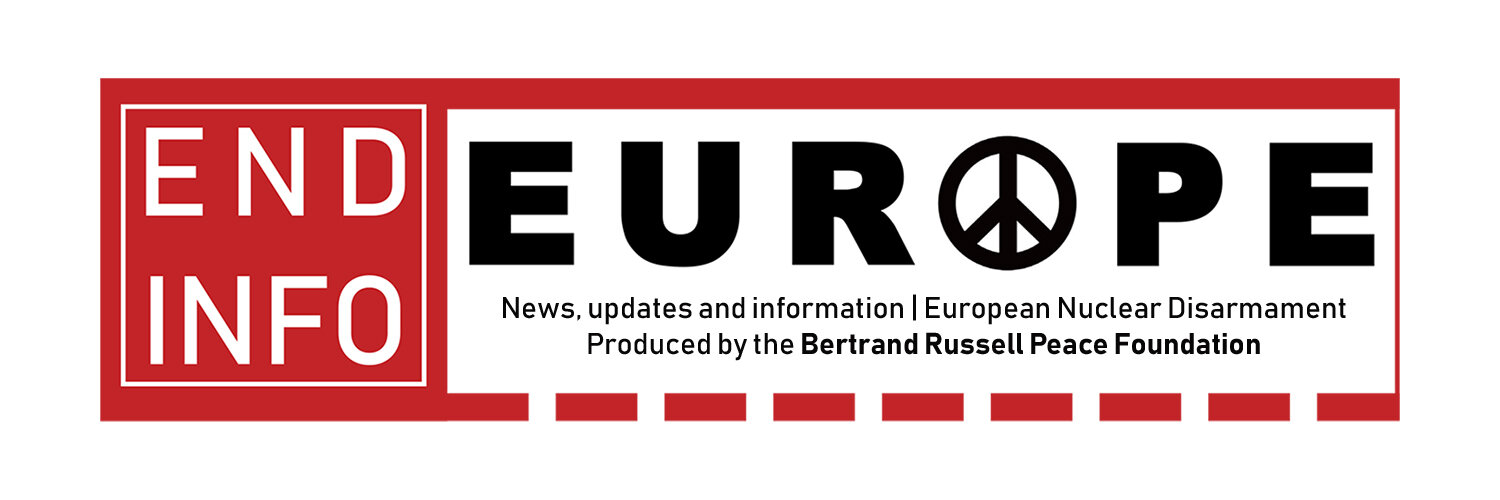Bomb damage
From END Info 37
According to a new report by Hans Kristensen of the Federation of American Scientists (‘Was There a U.S. Nuclear Weapons Accident At a Dutch Air Base?’, 03/04/23, fas.org/blogs/security/2023/ 04/volkel-nuclear-weapon-accident), evidence has come to light that suggests an accident involving a B61 nuclear bomb took place at the Volkel Air Base in the Netherlands. The Pentagon strenuously denies the idea. Kristensen writes:
A photo in a Los Alamos Laboratory ... student briefing from 2022 shows four people inspecting what appears to be a damaged B61 nuclear bomb ... If the image is indeed from a nuclear weapons accident, it would constitute the first publicly known case of a recent nuclear weapons accident at an airbase in Europe.
Volkel is one of several bases across Europe that house US nuclear bombs under ‘nuclear sharing’ arrangements. Other bases are stationed in Belgium, Italy, Germany and Turkey. Under ‘nuclear sharing’ arrangements these bombs are not only stored in non-US territory but in ‘peace time’ they are guarded by US forces. The US trains ‘participating country’ airforce personnel to drop these nuclear bombs and in the event of nuclear war, ‘participating country’ aircraft will be loaded with the bombs.
The actual arrangements and command systems involved in nuclear sharing are at best opaque and at worst completely baffling. One example of this is highlighted by Kristensen who writes:
Most people would describe a nuclear bomb getting bent as an ‘accident’, but U.S. Air Force terminology would likely catagorize it as a Bent Spear ‘incident’, which is defined as “evident damage to a nuclear weapon or nuclear component that requires major rework, replacement or examination or re-certification by the Department of Energy”. The U.S. Air Force reserves “accident” for events that involve the destruction or loss of a weapon.
However you choose to describe the damage done to this B61 bomb, there are a number of questions that require urgent examination. For instance: how many ‘incidents’ or ‘accidents’ have there been at nuclear sharing bases over the past decade? Are these frequent events or very rare indeed? How did this damage occur? Was it due to technical or human error? How often are there instances of technical or human error at nuclear sharing bases? Was there any damage to the nuclear warhead on this B61? How frequently are nuclear warheads damaged at nuclear sharing facilities? What are the potential consequences of such damage? What arrangements are in place to deal with any such consequences? How often are these arrangements activated?....
The list of question could go on and on but no matter how many questions are asked and no matter how often such questions are asked, the US and NATO countries involved in nuclear sharing are unlikely to answer. There is a veil of secrecy over the whole enterprise, which makes the prospect of the continuation and possible expansion of US nuclear weapon storage in Europe very troubling indeed.
The US is currently deploying a new range of B61-12 nuclear bombs to Europe. It looks possible that such bombs will also be deployed to the UK. The anti-nuclear movement is building opposition to these and related developments.

